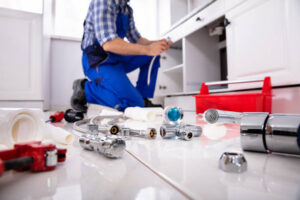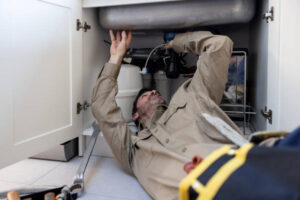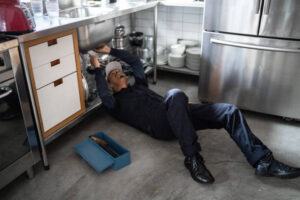Many find their bathroom always dripping. Once a shower leak woke a buddy of mine. We both smiled at the water’s attempt at independence from restrictions. Our battle cry is a leaking shower repair, hence we paid significant attention to solve the annoyance. Drips can be uncomfortable, and a shower leak can waste money as well as water.

Usually, the first sign of hazard on a floor or wall is a damp area. These puddle could seem harmless. They can, however, hide a more major issue. The wall construction can be degrading and would be expensive to fix later on. Knowing the source gives you a fighting chance. First look at the sealant surrounding the shower. Once caulk loses its hold, water finds unpleasant places. Many homes overlook little leaks until they start to show as major mold areas.
Sometimes the problem is merely a seal aging one. Calcium does is hardening over time. One neighbor cut the leak to a tiny hole. Once new caulk plugged the space, the leak ceased. Usually smart to keep additional caulk on hand. You can move quickly this way. A basic tube of silicon sealant sometimes divides a leaking shower from a great one.
Never given the shower head much thought? A failing or loose shower head drips like a busted faucet. The connection screw can break out allowing water to send a few droplets off-target. You could find results adjusting or tightening the shower head. This little fix gives you time to focus on other likely plumbing issues. Like a challenging relationship, a little adjustment can make all the difference.
One then comes into more complicated leaks. Many times, a little crack in a pipe within the shower wall causes complications. Sometimes these cracks show up after heavy use. Water could find its route of exit through these crevices. After years of shower splashing, one property owner once discovered a little pipe break. The required fix was replacing the broken part. Though some work was required, the release was quite amazing. If the pipes run deep, even those do-it-yourself aficionados sometimes need expert help.
Shower pans and trays have some problems too. Under the tile from the shower pan, water can seep into the layers. Sheer pan gaps allow this. One family I know overlooked a broken shower pan for far too long. When water leaked in at last, the flooring was ruined. Get repairs done before greater harm results from a shower pan showing issues. Often all it takes is a pan change. More severe situations could call for a different basis.
Finding a leaky shower cannot be always easy. One might hear flowing water emanating from nowhere. From a shower valve, for instance, water could be gathering under the wall. See the links behind the plastic panel. Many of us would sooner spend our evenings viewing a terrific movie than handling water under pressure. But should a leak be found in this location, a thorough investigation can help to avoid a major issue downstream.

About shower valves, they might also be troublesome. A worn-out valve might let water escape even in circumstances when the shower is off. I recall a handyman telling me that his old house had noisy valves meant to leak rainwater on command. Not always is substituting and cutting the answer. Sometimes a valve repair kit works. You may save more money if you can handle some work over the weekend. The secret is not to let continuous leakage go unnoticed.
Under investigation should also be water pressure issues. High water pressure can cause water to pass apparently intact seals. Sometimes washing kits contain pressure regulators for tanks and pipelines. By means of a pressure regulator, your pipes will settle. Once I joked sarcastically that my shower behaved like a fire hose after a pressure rise. My friend suggested a little water pressure dial-down. Little subterfugation with water valves will do wonders. You could see changes immediately following the change.
Sometimes the simplest solutions are overlooked. A broken or worn-out shower curtain or liner could let water escape from the wrong side of the stall. Hurriedly you could point the blame on the pipelines or valves. But consider how worn-out accessories could damage bathroom flooring from water. Once I saw a commercial advertising a shower curtain resistant to splashes. The lesson was absolutely clear: your shower curtain is rather important. Changing it will help you avoid future repairs expenses.
Usually unnoticed as an offender is mineral buildup in the shower head or pipework. Hard water leaves traces on surfaces, thereby restricting water flow and splitting joints. I remember a story of a retired teacher who overnight cleaned her showerhead in vinegar from a bowl. The next day, water came smoothly; the drop disappeared. Vinegar is usually a fairly cheap fix. It eliminates mineral deposits and smooths things out. Doing this cleaning every few months helps avoid problems down the road.
Many of these problems are clearly visible with attentive inspection before they become more serious. A little moisture around the glass door, for example, would indicate a broken seal. One couple discovered water collecting close to their shower door after a recent thunderstorm. On the door there was a fading seal strip. Changing the strip stopped the water intrusion right away. Though simple, the patch avoided many more issues down road. Always check the seals around every junction.
Does the ceiling right above the bathroom display water stains? That gives grave questions. One could speculate from the shower above as leaking. I recall once when water damage made a friend’s ceiling sag. The primary issue was hidden behind tiles in the upstairs bathroom. Early leak repairs help to restrict spreading of damage. Now a small change will avoid a whole ceiling replacement tomorrow.
Another usual mistake is ignoring the reality that plumbing is not stationary. Materials either expand or shrink with temperature changes. Leaks may follow from these developments. Years of heat and cold cycling might start even a pipe thought to be in good condition leaking. One of the plumbers once told me pipes were like old friends. Sometimes people express themselves in odd ways after a cold winter. The secret is to actually pay close attention when they do. Little cracks and drips neglected over time can lead to more serious issues.

There are several repairs homes owners can undertake on their own. Simple sealants and small leaks demand for do-it-yourself techniques. One can fill many areas around the shower base and door with a tube of excellent silicone. A few minutes and a screwdriver can really make a difference. Good instructions from a manual or a reliable internet source will enable novices to safely negotiate the process. Once I assisted a neighbor in replacing caulk around her shower. It was an easy chore that began to help immediately.
For those few situations when the repair seems beyond simple tasks, professional help may be needed. Through walls, under flooring, demand more seasoned hands. A professional will locate a leak faster than you could ever imagine drip. It can call for breaking out wall or floor portions. These considerably more invasive treatments totally stop water damage. Sometimes laughter results from realizing even a small drop can totally destroy a house.
Safety always comes first even with any type of shower repair. Particularly well neither water nor electricity combine. Taking care like cutting off the primary water source is never a bad idea. Too many times I have seen a stray spark start serious problems. Keeping a safe surrounding allows you to protect yourself. In terms of simple instruments and some broad understanding, they go rather far. It largely concerns knowledge and prudence.


